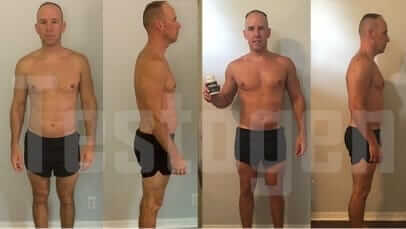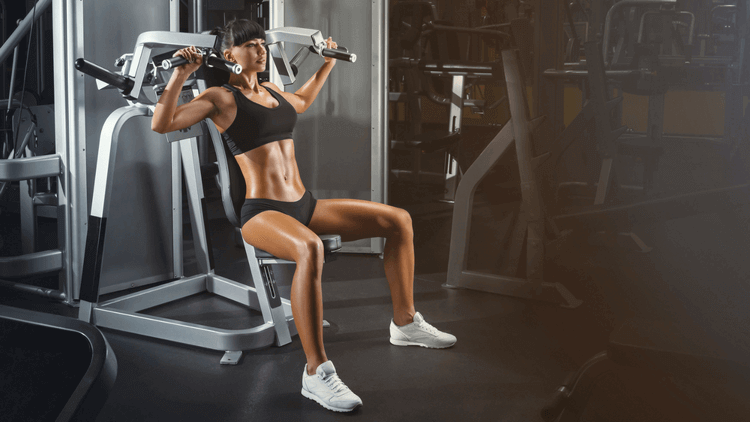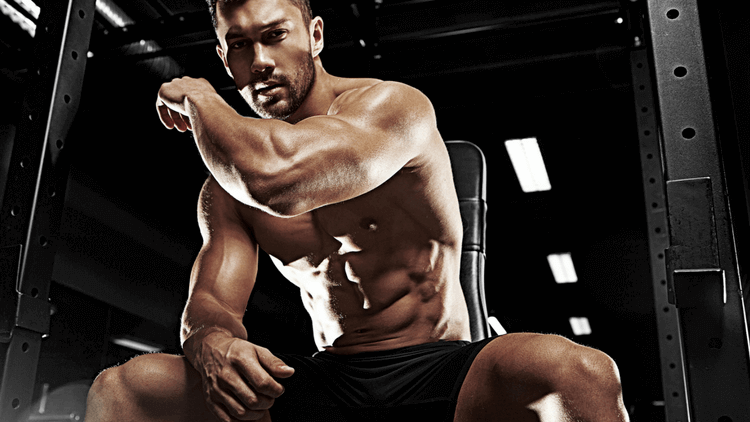When you think of resistance training, you probably think of barbells, dumbbells, or fixed machines, right? Of course you do. They’re super-common and they’ve been used for ages. What probably doesn’t pop into your head is a resistance band, a fairly recent exercise device that’s starting to find popularity and make its way into mainstream fitness. This article will look at exactly what a resistance band is, why I like them, and how to use one in your own training.
First things first: What is a resistance band?
As its name suggests, a resistance band is a rubberized band that you can stretch. The idea is that as you stretch the band its “elastic resistance” increases, meaning that the further you stretch it, the more force you need to apply. One way to think of it is to imagine a giant rubber band, just like the ones you used to flick at people as a kid. (Don’t pretend you didn’t!)
Most bands are rated based on the elastic resistance they provide at a standardized amount of stretch. Lighter bands start at around 6lb of resistance, while heavier bands go up to around 22lb. Plus, since most sets allow you to combine numerous bands, you can bring this number up into the 60−70lb range.
What are the benefits?
Low cost
One of the reasons I like resistance bands is that they’re super-cheap, with the average set costing between $5 and $20 depending on where you buy it and how much resistance it offers.
Easy to transport
Since they’re made out of rubber, the bands are really light. A whole set, including all of the attachments and handles, weighs about 750g. This is perfect for traveling, as they’ll easily fit into your luggage without going over the weight requirements. This means that you can find a way to have a basic resistance workout on holiday, even when there’s no gym.
Versatile
Another great benefit of resistance bands is how versatile and adaptable they are; with enough thought and effort you can replicate almost any exercise and train pretty much every muscle on your body.
The Basics of Bodybuilding: A Beginners Guide >>
Which exercises can you do with them?
In all honesty, you can do almost every exercise that you could do with free weights; you just need to use your head and think about leverage! Or, if that all sounds like too much work, then you can hop onto Google or YouTube and find tons of suggestions. Here are some of my personal favorites to get you started:
Upper body
Seated rows: This is one of my all-time favorite exercises for developing a thick, wide back. To perform this movement, sit down, using your feet to extend the band and lock it in place. From that position, proceed to row as normal just like you would on a machine.
Chest press: For a great chest workout, you should lie face up, with the band tucked under your back and one handle in each hand. From this position, press just like you would with dumbbells. Another simple variation is to perform standing chest presses with the band attached to a fixed point behind you.
Bicep curls: Everyone loves a good bicep pump! To perform this exercise, all you need to do is fix the resistance band underneath your feet and then proceed to curl exactly as you would with a barbell. If you need a picture or a video to know what a bicep curl looks like, then I’m worried about you!
Seated shoulder press: All about the boulder shoulders. Sit on the middle of the band and push the handles directly up and above your head.
Lower body
Front squats: Pop the bands over your shoulder and tuck the ends securely under your feet. You can then squat pretty much as normal, though again, the toughest part of the movement will be at the top, which is the opposite of a free weight squat.
Glute kickbacks: In the “all fours” position, secure the band under your hands and attach the other end around your foot (most sets have handy straps for this). You can then kick your leg backwards against the band’s resistance for an awesome glute workout.
Abs/obliques
Cable twists: If you attach one end of the bands to a pole or solid structure (you can use clips, but we’ve found that a basic knot works just fine) then you can perform cable twists. Start with your body at ninety degrees to the structure you attached your band to. The band should be at your side and you should have outstretched arms. Rotate your torso so that your upper body aligns with your hips and your arms are now outstretched in front of you. Hold for three seconds, then return to where you started. This should give you a great core workout.
Avocados – Good Or Bad? >>
What about sets and reps?
Okay, let’s be honest, you’re not going to get a super-heavy squat, bench, or deadlift using resistance bands. No-one is recommending you try some ridiculous 1 rep max resistance band squat!
Resistance bands are great for bodybuilding-style work where your focus is on keeping constant tension on the muscle and focusing on your mind−muscle connection.
I recommend between 3 and 5 sets of 10−15 reps, all of which should be performed with a nice controlled tempo. If you keep the rests short, ideally 45−60 seconds, then you should be able to achieve a great pump in the muscle and stimulate some good muscle growth.
Time to grab some bands and get to work
If you’ve paid attention all the way through, then you now know what resistance bands are, why they’re useful, and how to get a great workout with them. Holidays, gym costs, and time availability are no longer excuses not to get the results you want.
Go get training!







